Suffering the dwindling of clam resources due to the outbreak of the Indian Ocean Tsunami occurred during December - 2004, a batch of Coastal families in Kundrakadu Hamlet of Kovalam Village, Chengalpattu District, Tamil Nadu visited the ICAR-Central Institute of Brackishwater Aquaculture, Chennai for guidance and facilitation for an alternative livelihood.
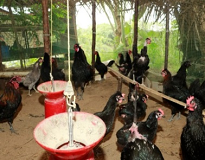
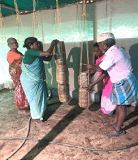
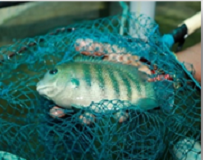
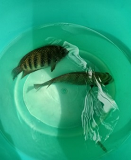
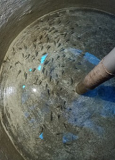
The Institute in convergence with the Chennai Petroleum Corporation Limited (CPCL) implemented a Project under the Corporate Social Responsibility (CSR) of CPCL of Madras Refineries Limited (MRL). By organized them as a group (10 members) to take-up the Brackishwater Aquaculture activity, the Project team trained them for establishing a customized homestead Recirculatory Aquaculture System (RAS) for pearl spot fish (Etroplus suretensis) larval rearing. In addition, they also established the poultry rearing, mushroom production and kitchen garden units as an integrated set-up for providing the group members with adequate employment and income.
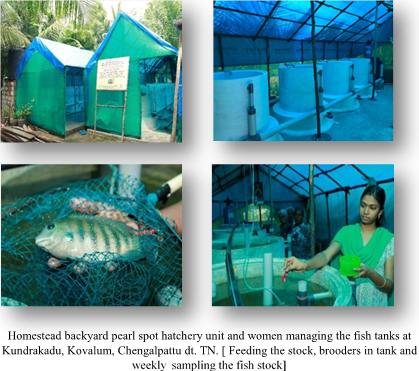
The Pearl Spot Seed Rearing activity involved the stocking of Pearl Spot fry size seed in the modular tanks, feed preparation and feeding, tank cleaning and maintenance, monitoring the fish growth, harvesting and packing the fingerlings and marketing to the local ornamental fish farmers and traders. The ICAR-CIBA fish hatchery provided around 2,000 Pearl Spot fry with the an average size of 1.0 cm (range 0.8 cm to 1.2 cm) and stocked @ 500 each in 4 concrete tanks. The feeding was done with CIBA Pearl spot GrowoutPlus feed @ 3% to 5% of body weight on daily basis. After 52 days of culture, the fish had attained the average weight of 0.8 g (0.6 g to 1.1 g) with an average size of 3.2 cm (range of 2.8 - 3.6 cm). A total of 1,865 Pearl Spot fingerlings were harvested, indicating a successful nursery phase with the survival rate of 93.3% with the worked out cost of production to be Rs. 2,500/-(seed cost @ Re. 1.0/- seed and feed cost Rs. 500/-). The fingerlings were sold @ Rs. 6 / fingerling to the ornamental fish farmers. With this, the group earned an income of Rs. 9,000 per batch from the Pearl Spot Seed Rearing Technology. The drain from the larval rearing tanks was used for growing vegetables in the kitchen garden.
During the technology adoption, the group collected 40 Pearl Spot brooders (50 g to 80 g in weight) from the wild at the Pulicate Lake in Tiruvallur District of Tamil Nadu. The brooders were quarantined in CIBA fish hatchery for 20 days for pairing and brought to the beneficiaries’ RAS based homestead modular tanks set-up.
The tank reared Pearl Spot brooders bred during the month of June - 2020 and obtained 130 early fry. The fry was reared and the fingerlings would be sold to the ornamental fish farmers.
In addition to the Pearl Spot nursery rearing, the beneficiaries have also earned an income of Rs. 10,000/- to Rs.12,000/- from the sale of backyard poultry and Rs. 5,000/- to Rs. 6,000/- from homestead backyard vegetable farming. The adoption of “Homestead Backyard Pearl Spot Breeding and Seed Rearing Activity” along with poultry farming and kitchen gardening has provided the livelihood opportunity to the clam collecting coastal families.
(Source: ICAR-Central Institute of Brackishwater Aquaculture, Chennai)







फेसबुक पर लाइक करें
यूट्यूब पर सदस्यता लें
X पर फॉलो करना X
इंस्टाग्राम पर लाइक करें